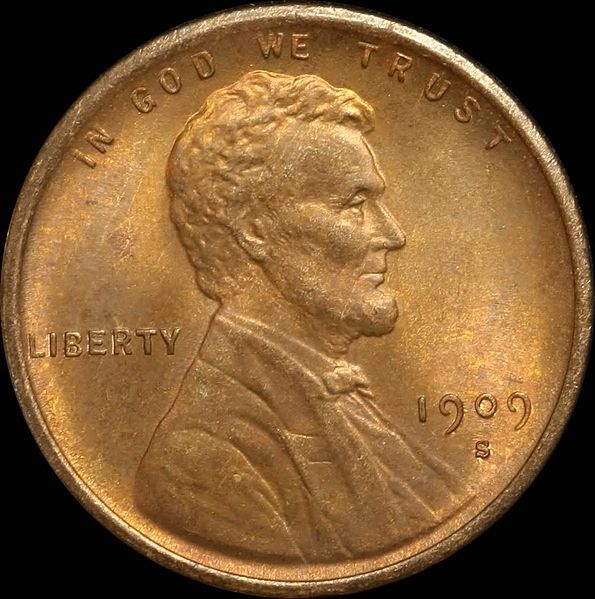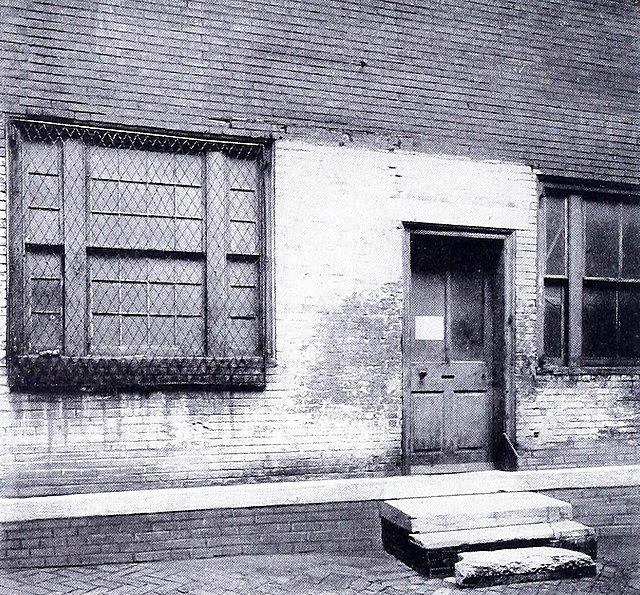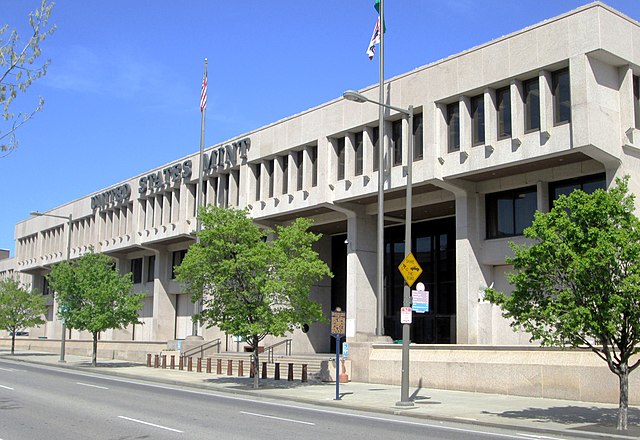The Lincoln cent is a one-cent coin that has been struck by the United States Mint since 1909. The obverse or heads side was designed by Victor David Brenner, as was the original reverse, depicting two stalks of wheat. The coin has seen several reverse, or tails, designs and now bears one by Lyndall Bass depicting a Union shield. All coins struck by the United States government with a value of 1⁄100 of a dollar are called cents because the United States has always minted coins using decimals. The penny nickname is a carryover from the coins struck in England, which went to decimals for coins in 1971.
Saint-Gaudens model for the cent obverse. With an Indian headdress added, the design was later developed for the gold eagle coins.
Brenner's 1907 plaque of Abraham Lincoln
Treasury Secretary Franklin MacVeagh (depicted on a Mint medal)
1909-S Lincoln cent
The United States Mint is a bureau of the Department of the Treasury responsible for producing coinage for the United States to conduct its trade and commerce, as well as controlling the movement of bullion. The U.S. Mint is one of two U.S. agencies that produce money in the case of minting coinage; the other is the Bureau of Engraving and Printing, which prints paper currency. The first United States Mint was created in Philadelphia in 1792, and soon joined by other centers, whose coins were identified by their own mint marks. There are currently four active coin-producing mints: Philadelphia, Denver, San Francisco, and West Point.
The First U.S. Branch Mint in California, which opened on April 3, 1854, is located at 608–619 Commercial Street in San Francisco. The building now houses the San Francisco Historical Society.
First United States Mint (Philadelphia); photo from 1904
The Philadelphia Mint
The Denver Mint








